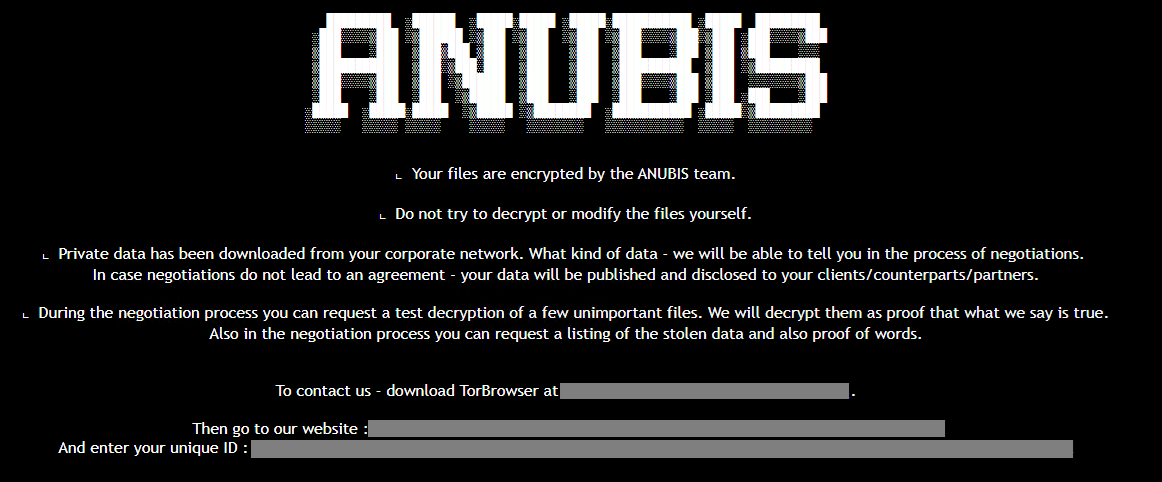A new and highly destructive ransomware strain known as Anubis is causing alarm across cybersecurity circles for its brutal and irreversible attack strategy. Unlike traditional ransomware that offers a path to file recovery upon payment, Anubis not only encrypts victims’ files but also wipes them, rendering recovery impossible—even if a ransom is paid.
A Deadlier Breed of Ransomware
Discovered by cybersecurity researchers during recent attacks, Anubis is designed to be purely destructive. Once it infiltrates a system, it encrypts files using strong algorithms and then proceeds to overwrite or delete encryption keys and shadow copies, making restoration efforts futile. In many cases, even system backups are targeted and erased.
This shift in ransomware behavior is alarming. Traditionally, cybercriminals have relied on the promise of file recovery to extract payments. Anubis, however, appears to adopt a scorched-earth strategy, aiming to inflict maximum damage.
How It Works
- Initial Access: Anubis is believed to spread through phishing emails, malicious downloads, or exploited vulnerabilities in unpatched systems.
- Encryption: The malware rapidly encrypts user files, often while masking its activity.
- Data Wipe: Instead of leaving a viable decryption path, Anubis erases encryption keys and system restore points.
- Ransom Note: Victims are still presented with a ransom demand, but paying it does not result in data recovery.
No Honor Among Cybercriminals
What makes Anubis particularly dangerous is the false hope it gives victims. By issuing a ransom demand while knowing recovery is impossible, the attackers manipulate victims into wasting money on a solution that doesn’t exist. This breaks the “ransomware code” that many previous groups followed—where payment typically meant decryption.
Implications for Businesses
The rise of ransomware strains like Anubis underscores a pressing need for proactive cybersecurity:
- Regular, offline backups stored separately from the network
- Employee training to avoid phishing traps
- Patch management and timely software updates
- Endpoint detection and response (EDR) tools to monitor suspicious activity
- Zero-trust security models to limit internal lateral movement
Once Anubis hits, there’s no turning back—making prevention the only effective defense.
Final Thoughts
Anubis is a stark reminder that ransomware is evolving from a profit-driven threat to a destructive weapon. Whether motivated by financial gain, sabotage, or chaos, the stakes have never been higher. Organizations must not only prepare for recovery—but build strategies to stop ransomware before it strikes.


